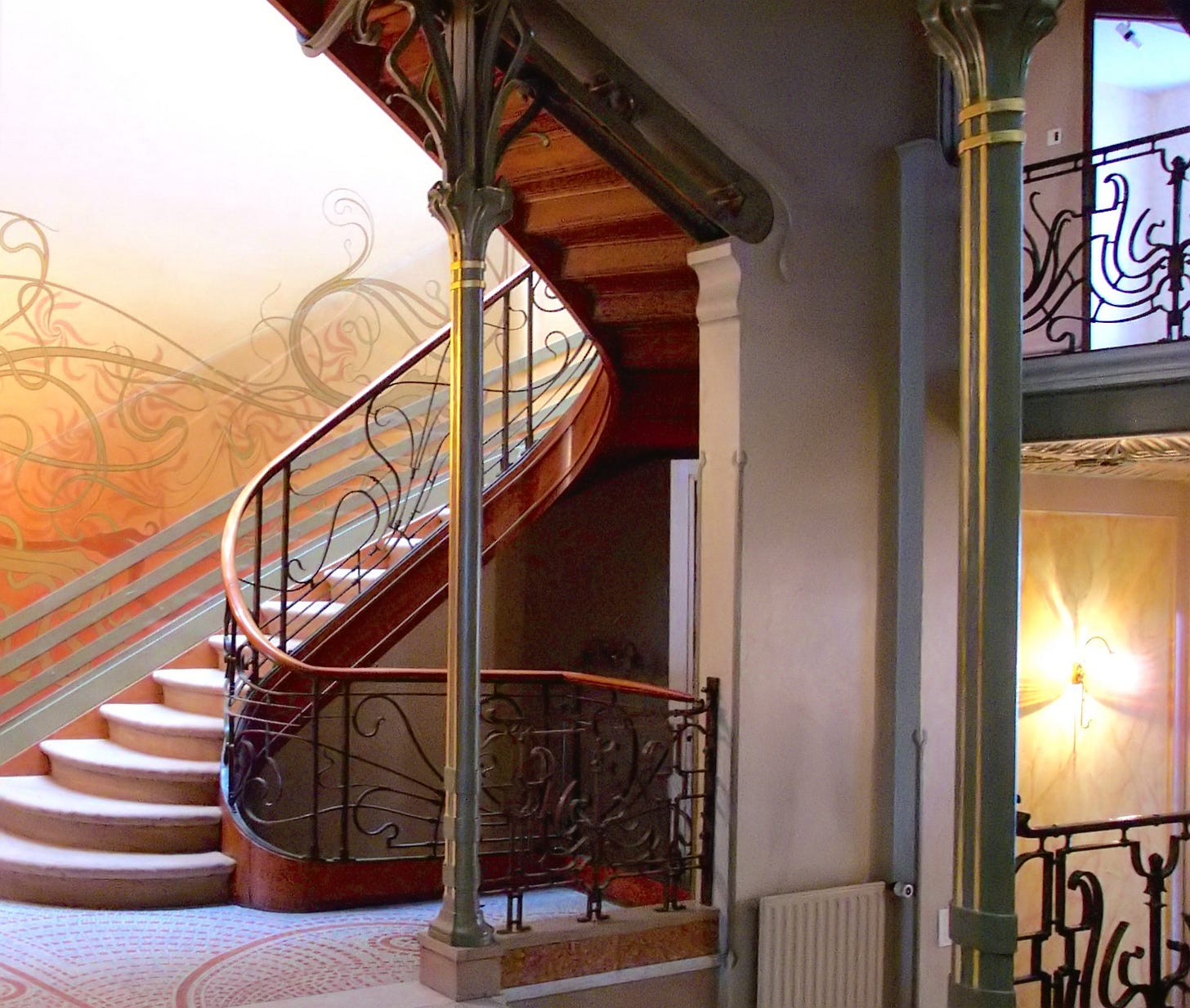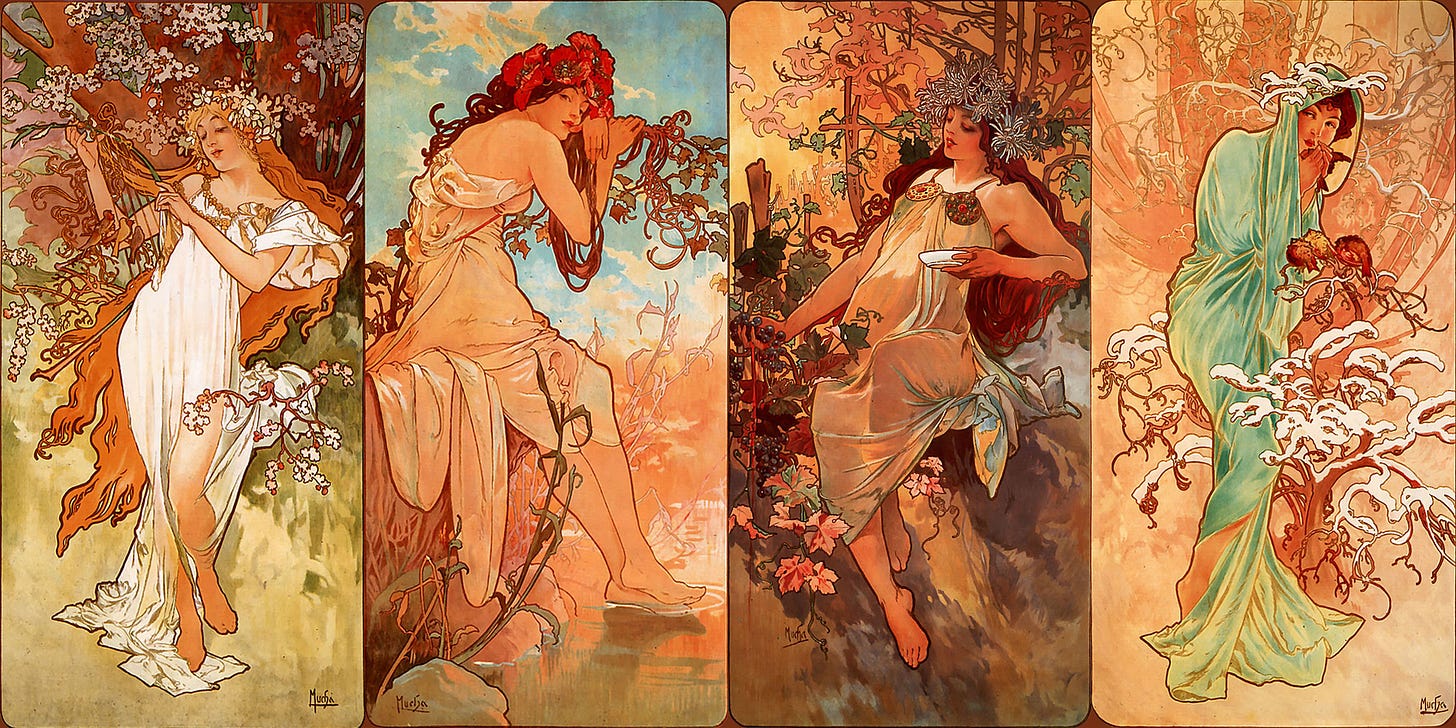Welcome to the fourth season of Synthesized Sunsets: a seasonal magazine about speculative fiction and the future of pop! This spring, the mag will shift in direction yet again. The biggest change will be a renewed focus on fiction. Both of us will be trying to get published in mainstream SFF magazines this year, and we hope to use the more futurist articles in the magazine as inspiration for future stories. With luck, you’ll be able to see the genesis of published sci-fi stories right here on the podcast!
Also, both of us will be attending the Hugo Awards in August. In preparation, we will be reviewing more contemporary sci-fi in the lead-up to the event. We are also going to start posting video versions of old essays on our YouTube channel, which you can find here. In light of this, we will be getting a long-overdue mic upgrade (!!) next week.
Now that we’ve gotten the announcements out of the way, let’s talk about our theme for this issue: rebirth. When I think about rebirth, I instinctively think of it in terms of identity. It’s less about the bodily elements and more about adopting a self-concept that a previous version of you would find unrecognizable. In general, speculative fiction allows for some interesting explorations of rebirth. More on that later.
The art that we are using for this issue is Art Nouveau, and in particular the art of Alphonse Mucha. Art Nouveau was a movement that sought to explicitly break from the old artistic tradition and create something totally new. But while they wanted Art Nouveau to reflect modernity, they didn’t want it to feel sterile or mass-produced. So Art Nouveau emphasizes nature-inspired organic lines and a vibrancy.

Art Nouveau is remembered today mostly in terms of its buildings, but it was created to feature across all areas of life: visual art, architecture, and even functional objects. You’ve probably seen its classy turn-of-the-century advertisements that frequently make the rounds on the Internet. The goal was for the boundaries between high art and low art, between aesthetic design and everyday objects, to merge into some kind of unified Art with a capital A.
To me, this makes Art Nouveau vaguely sci-fi in spirit. Art Nouveau’s creators wanted to engineer an all-encompassing art form, but in a way that was humanistic rather than mechanistic. In that sense, Art Nouveau was far more utopian and romantic than the functional movements that ended up succeeding it. All of these qualities make it a great fit for the themes of the magazine that we have discussed thus far.
Alphonse Mucha was perhaps the most recognizable face of Art Nouveau, using his trademark nymphs to create advertisements and wildly popular interior decor. In his masterpiece The Seasons (show below), Mucha depicts four seasonal nymphs in his trademark style. This painting was an active effort to bring together the worlds of high art and low art. Mucha expressed regret about the degree to which his work was commercialized, but he was also happy to be bringing art down from its ivory tower.
Since fantasy (and Art Nouveau) is a direct descendant of myth, it obviously inherited many of its themes of rebirth. But sci-fi also makes a surprisingly good vessel for rebirth, mostly because of its recurring narratives of transcendence and renewal.
In the transcendence narrative, humanity or perhaps just one individual achieves a breakthrough (often scientific) that allows it to ascend to a higher plane of existence. The godfather of all such stories is Arthur C. Clarke, who frequently wrote about a far more advanced alien race shepherding humanity into broader cosmic society and the next stage of their evolution. This story of rebirth has been reinvented countless times over the years, and it shows no signs of stopping.
In the renewal narrative, humanity or a post-human Earth comes into bloom once more after a period of decline or destruction. This story is far more timeless than the transcendence narrative, but the canonical example is perhaps A Canticle for Leibowitz: a 1950s novel that imagines Catholic monks trying to rebuild and make sense of humanity’s destruction, centuries after nuclear apocalypse. Canticle clearly inspired numerous post-apocalyptic narratives, and its weaving of Catholicism with science was a big influence on favorite subject The Book of the New Sun by Gene Wolfe.
Nowadays, renewal is associated with the solarpunk genre, which uses the climate as a lens through which to imagine a utopian future. Solarpunk is in conversation with dystopia and most older post-apocalyptic fiction, taking an optimistic approach rather than a pessimistic one. But despite their opposing philosophies, the two tend to go hand-in-hand. After all, renewal can only occur after some kind of decline.
Speaking of solarpunk, Art Nouveau was quite influential on solarpunk’s aesthetics. Many solarpunk-inspired buildings use those same organic curves and colors that the French were using more than a century ago. Just as romanticism is experiencing a sort of cultural revival in the digital age, I wouldn’t be surprised if Art Nouveau makes a comeback as well. It would certainly be a welcome change to Brutalist architecture.
Anyway, we hope to discuss all that and more in the months ahead! As always, you can hear us say more about this topic in the podcast episode itself. See you there! (And perhaps we’ll catch you at WorldCon— let us know if we can expect to see you there!)
EPISODE TIMESTAMPS
0:12 - Introduction
0:26 - Upcoming changes to Synthesized Sunsets
2:10 - Hugo awards criticism
5:38 - Theme of Rebirth for the Spring Season
7:59 - Art Nouveau as the art for the Spring Season of the magazine
11:18 - Alphonse Mucha
15:52 - The advantages to flat art
17:45 - “The Seasons” by Alphonse Mucha
19:52 - Speculative fiction with a theme of rebirth
20:06 - "The Egg" by Andy Weir
25:24 - The transcendence narrative
27:44 - "Seveneves" by Neil Stephenson
34:31 - Discussing the post time skip section of Seveneves
38:38 - “Childhood's End” pioneering the transcendence narrative
40:59 - Quirks of Golden Age Sci-fi Writing
46:29 - Golden age sci-fi stories do not properly portray danger and peril
48:28 - Should ideas in a work be graded on a curve based on when they were published?
51:40 - "A Canticle for Leibowitz" as the foundational renewal narrative
53:46 - Conclusion













Share this post